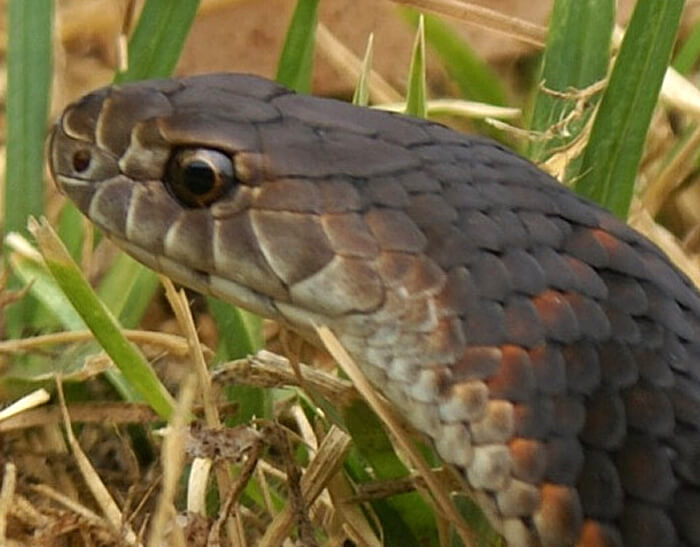Introduction
When it pertains to the remarkable globe of snakes, few species catch the imagination fairly like the infant tiger snake. Understood for their unique pigmentation and potent venom, these snakes are an essential component of Australia's distinct ecosystem. In this extensive article, we will certainly explore different facets of child tiger serpents, including their actions, environment, and just how to safely communicate with them. Whether you're a wild animals lover or simply interested regarding these creatures, recognizing infant tiger snakes can assist promote a much deeper appreciation for nature.
Baby Tiger Snakes: What You Need to Know About Their Behavior and Habitat
What Are Infant Tiger Snakes?
Baby tiger serpents are adolescent types of the highly venomous varieties understood scientifically as Notechis scutatus These serpents are largely discovered in seaside areas of Australia, specifically in Tasmania and southerly Victoria. As they grow, their pigmentation modifications from a more soft scheme to the characteristic yellow and black bands that give them their name.
One notable facet of baby tiger serpents is their dimension; hatchlings typically measure around 25-30 centimeters are there snakes in tasmania in length. Despite Visit website their little stature, they possess a surprising quantity of poison that can be destructive to humans if bitten.
Physical Characteristics
Tiger snakes have numerous vital physical attributes:
- Coloration: The distinct banding pattern often becomes a lot more obvious as they mature. Size: Grownups can reach lengths of up to 2 meters. Body Shape: They have a durable body that helps in swimming and earthbound movement.
Where Do Infant Tiger Snakes Live? Comprehending Their Habitat
Understanding the environment preferences of child tiger snakes is essential for both conservation initiatives and public security. These serpents flourish in different environments:
- Wetlands: Marshes and swamps supply ample hunting grounds. Coastal Regions: Typically discovered near coastlines where they can quest for prey. Woodlands: Dense greenery offers cover from predators.
Geographical Distribution
Tiger serpents are mainly found along Australia's southerly coast, including:
- Tasmania: Home to one of one of the most infamous populations. Victoria: Especially in areas near water bodies.
Are Tiger Snakes Venomous? A Deep Dive into Their Venom
One usual question develops when discussing child tiger serpents: "Are tiger serpents poisonous?" The solution is a resounding yes!
Venom Composition
The poison of tiger serpents has neurotoxins that can create paralysis, coagulopathy (blood clot issues), and potentially death if untreated. Below's what you require to understand:
- Effects on Humans: A bite from a tiger serpent can cause signs like swelling, pain at the bite site, nausea, and also respiratory system failure.
Comparison with Various other Venomous Snakes
In contrast to various other Australian snakes such as the eastern brownish snake or king brown serpent, tiger serpent venom is taken into consideration amongst one of the most powerful. However, casualties are uncommon due to improved medical treatments and access to antivenom.
Behavioral Patterns of Infant Tiger Snakes
Understanding exactly how infant tiger serpents act is crucial for those who reside in or check out locations where these reptiles are prevalent.
Nocturnal Habits
Most baby tiger serpents display nocturnal behavior. They have a tendency to forage for food throughout cooler evening temperature levels. This flexibility aids them avoid killers while improving their searching efficiency.
Hunting Techniques
Their hunting techniques include:
- Ambush Predation: Waiting stationary till prey comes close. Active Foraging: Actively moving with greenery or along waterways looking for food.
First Help for Serpent Bites: What You Should Know
Despite being interesting animals, experiences with infant tiger serpents can cause hazardous scenarios if bites happen. Understanding emergency treatment treatments can conserve lives.
Immediate Steps After a Bite
Remain calmness; panic enhances heart rate. Immobilize the affected limb using a splint or bandage. Seek instant medical attention-- antivenom might be necessary.Creating a Snake Bite Emergency Treatment Kit
A well-prepared first aid package ought to include:

|Item|Objective|| ------------------------------|--------------------------------------|| Compression bandage|To immobilize the arm or leg|| Splint|Maintains busted bones or joints|| Antihistamines|Reduces allergic reactions|| Emergency call numbers|Quick gain access to throughout emergencies|
Common Myths Regarding Tiger Snakes Debunked
Many myths surround these interesting reptiles; let's clear up some misunderstandings commonly held by people.
Myth # 1: All Tiger Snakes Are Aggressive
While some people may display defensive behaviors when endangered, not all tiger snakes display aggression in the direction of human beings unless provoked.
Myth # 2: Baby Tiger Snakes Are Less Hazardous Than Adults
This myth might not be additionally from the fact! Infant tiger serpents have virtually as much poison as adults relative to their size; thus they position significant risks if bitten.

FAQs Concerning Child Tiger Snakes
What do child tiger snakes eat?- They largely take in tiny animals, birds, frogs, and fish.
- Look for slim bodies with pale banding patterns that become extra obvious as they mature.
- Yes! Birds of prey and bigger reptiles may target them.
- Typically every couple of weeks as they grow rapidly throughout their early life stages.
- While some individuals do keep them illegally without authorizations due to their harmful nature; it's usually not recommended provided their poisonous status.
- With prompt clinical therapy-- consisting of antivenom-- the survival price is high!
Conclusion
In recap, recognizing infant tiger snakes-- what they consume, where they live, exactly how they behave-- can outfit us with valuable understanding concerning these remarkable yet dangerous animals. The significance of education surrounding emergency treatment procedures can not be overstated; recognizing how to respond efficiently after Behavior of venomous snakes a bite could conserve lives while cultivating regard for our crawling neighbors within Australia's abundant biodiversity range.
By valuing these snakes' duties within ecosystems-- and identifying potential threats-- we promote conjunction rather than fear-based reactions towards each other's presence in nature's grand tapestry! Whether you're a devoted hiker considering your next experience or simply curious about neighborhood wildlife experiences near home-- this guide acts as your trusted reference factor on the enigmatic globe lived in by our good friends-- the splendid baby tiger snake!
